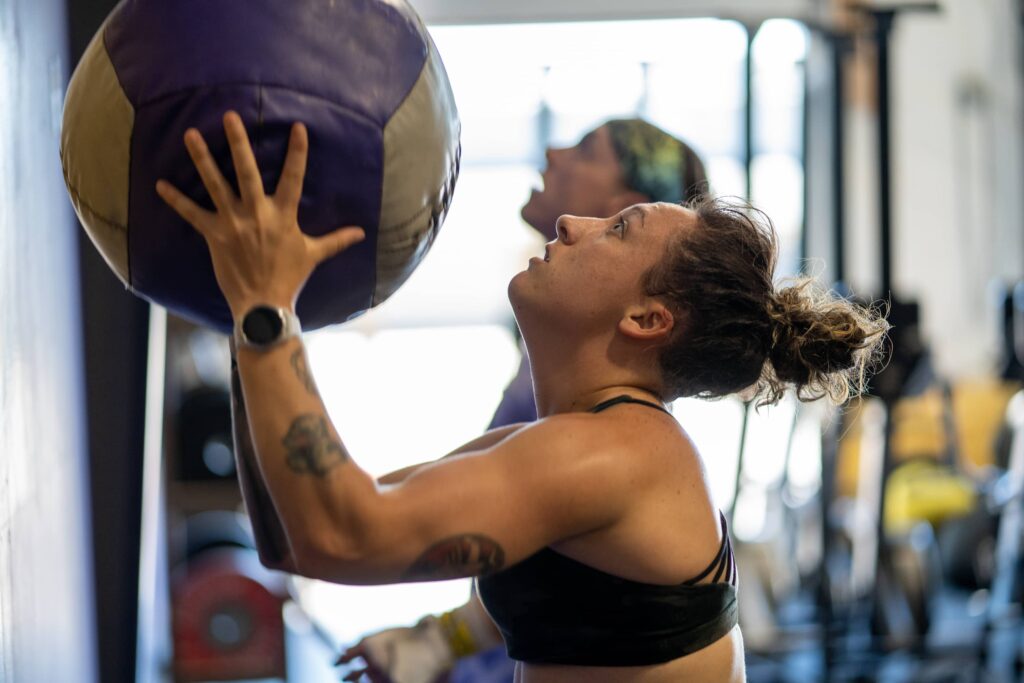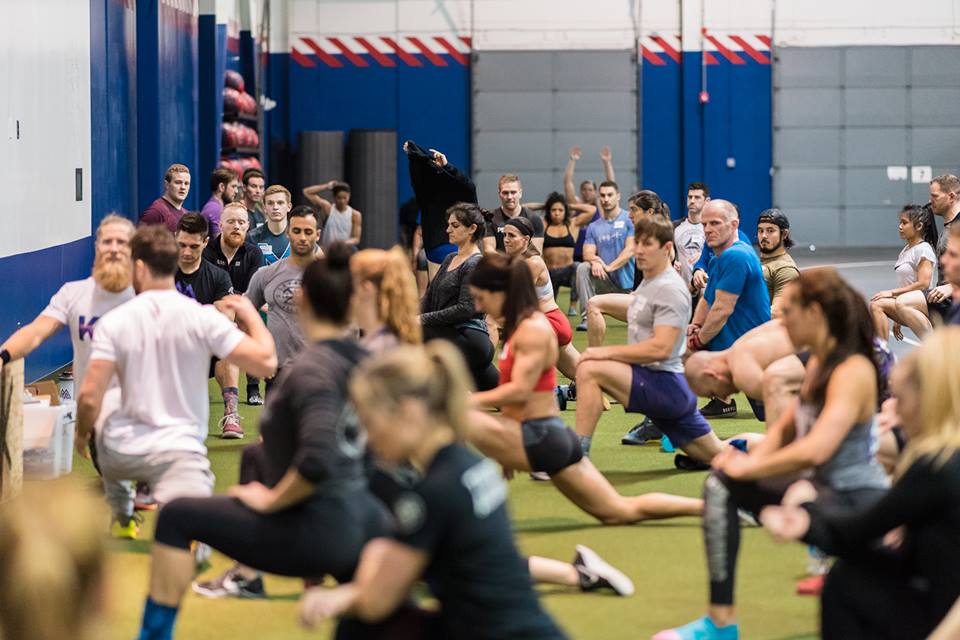Weekly Work Competition Block 1 Week 2

For those of you new to the blog, our Weekly Work is programming designed to provide structure to parts of your training that may not fit perfectly on any single training day such as longer aerobic work, strict gymnastics, or swimming. Therefore, rather than programming this additional work on a specific day, we are empowering you to decide which day this training makes the most sense for your personal growth. The process of developing this Weekly Work has been iterative, and the growth we’ve seen from all of you along with the feedback we have received is truly inspiring. If you haven’t bought-in yet, we urge you to do so, as we strongly believe this additional Weekly Work can take your fitness to a whole new level. We hope you enjoy it!
Flush
The goal with the weekly “Flush” is to allow you to work out the waste in your muscle tissue properly. We know that training is very catabolic (breaks you down, makes you sore), and that the best recovery tool is movement. Improving the speed at which this metabolic waste can be flushed out of your tissues can be improved through muscle contraction, which we are looking to achieve through a combination of biking (ideally on a C2 Bike Erg or another bike with low resistance), and walking. These flush sessions are meant to be non-impact and performed with a focus on breathing and restoration, not intensity. The goal of these sessions is keeping a higher cadence on machines with very low resistance to produce the stimulus. These sessions will vary from 20-45 minutes in length and, when combined with other bodywork like mobility, flossing, or massages, should leave you feeling less beat up from your training earlier in the week.
Flow
The significant difference between the Flow and the Flush sessions is how they feel. Flow sessions, compared to flush sessions, are meant to be more invigorating and include a more substantial variance in movement. Flow sessions will incorporate and combine traditional CrossFit movements that have large ranges of motion, dynamic yoga poses, strength and gymnastic accessory movements, static holds, static hangs, as well as some cardio. The goal for these sessions is to “wipe the slate clean” and prepare the body for the next day of training through quality, controlled movement. When taking on a flow session, athletes should prioritize movement quality and control rather than turning this session into an additional training piece.
Fasted Cardio
The focus for fasted cardio this phase will be on rowing. However, in Phase VI the rowing work has an additional stipulation: stroke rating caps. From our perspective, we still see a lot of room for growth on the rower, primarily with respect to technique and efficiency. We often see athletes bleeding energy due to lack of connectedness to the erg, positional errors, mistakes in sequencing their stroke, and most commonly, rowing at a stroke rate and/or damper that is much too high, and therefore inefficient. For those reasons we are going to prescribe stroke rating caps at varying durations as a means of teaching you how to “slow down to speed up.” Focused rowing work while working to keep your splits “respectable” while staying under the rating caps will be difficult, but the improvements in efficiency and overall output will be well worth your time. If you’ve been to a Misfit Athletics camp, you’ve probably heard the phrase “slow is smooth, and smooth is fast.” This concept is precisely what we are after.
Gymnastic Skill Accumulation
The last component of the weekly work is gymnastics skill accumulation. We have seen athletes make dramatic improvements in their strict gymnastics with these focused sessions. Every week we will alternate between pressing and pulling gymnastics work, all with the same focus: rep speed. When performing these sessions, athletes should focus on moving through the entire range of motion with speed rather than “grinding it out.” Learning to move with speed in these movements is the best way to stay moving when they show up in your training pieces. However, one noticeable change for this phase is that we will be selecting the movement we are looking for you to practice each week rather than providing multiple options.
Final Thoughts
One common question we receive about weekly work is: “when do I take a full rest day?” Our answer is always the same: “when you feel like you need it.” You may also choose to do as many or as few of the Weekly Work pieces as you feel are necessary and fit into your training. They can take place on any day during the week, meaning it can fit at the end of a training day, on an active rest day, or both. Furthermore, we are not looking to add any additional stress or FOMO with the weekly work; we merely mean to provide more structure to your training so that you can continue to grow and develop into an even more formidable athlete.
Happy Training!
2021 Competition Block 1 Week 2
1. MFT/Hatchet/Teens Weekly Work – For Completion:
Get the following work done at any point throughout your training week.
1a. Weekly Work – For Completion
Every 4 Minutes unti you’ve rowed 250/225 Calories
20 Unweighted Step Ups 20″
1 Set of Strict HSPU
Row for Calories in remaining time
1b. Weekly Work – For Completion
500m Ski
10 Scap Push Ups
500m Row
10 Scap Pull Ups
20 Banded Good Mornings
350m Ski
10 Scap Push Ups
350m Row
10 Scap Pull Ups
15 Banded Good Mornings
200m Ski
10 Scap Push Ups
200m Row
10 Scap Pull Ups
10 Banded Good Mornings
2. Masters Weekly Work – For Completion
2a. Weekly Work – For Completion
25 minute walk/jog/hike
Wear a 20/14lb ruck
Then
3 Rounds
15 Squats with a Twist
12 Band Pull Aparts
9 Scap Push Ups
5 Inchworms
2b. Weekly Work – For Completion
500m Ski
10 Scap Push Ups
500m Row
10 Scap Pull Ups
20 Banded Good Mornings
350m Ski
10 Scap Push Ups
350m Row
10 Scap Pull Ups
15 Banded Good Mornings
200m Ski
10 Scap Push Ups
200m Row
10 Scap Pull Ups
10 Banded Good Mornings


